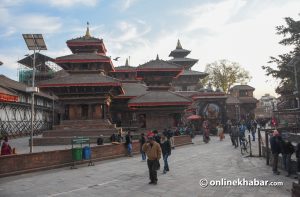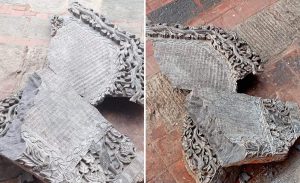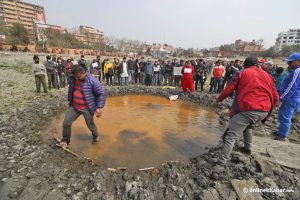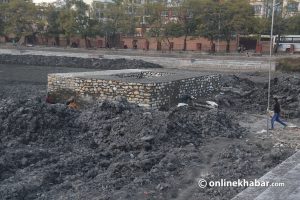
In a sunny morning last month, four young boys and girls walked around various temples of Kathmandu rather leisurely. Along with them was a man in his 50s, describing them which corner has which temple and which temple houses which god.
This man was Alok Siddhi Tuladhar, who says he has been conducting the ‘heritage walk’ around Kathmandu for the past 12 years. The four young people were also parts of his campaign.
What is heritage walk?
During these walks, Tuladhar, arguably an expert of the city’s culture and tradition, explains the youth about importance of heritage monuments and motivates them to conserve them.
Tuladhar says he wants to include as many young people as possible because he feels that heritage walks shouldn’t be held only for tourists. Further, the younger generation doesn’t know much about Nepali culture and heritage which they should.
“By the time I realised its importance, I was 40-year-old. I feel I was reborn,” he adds.
During the walk on the World Heritage Day (April 18), to make sure the kids aren’t bored, Tuladhar indulges them in an activity. Standing behind the Kasthamandap temple currently being reconstructed after the 2015 earthquake, he asks them to find the eight Bhairavs protecting the temple.
The kids are quite excited and start locating stones, which are believed to be statues of the Bhairavs, scattered around the area. A few are easily located as they are shrouded in vermilion powder and flowers. Some are difficult to find as they have been covered by vegetables vendors and various shops.
At the end, seven Bhairavs are located. No one has been able to find the last Bhairav.
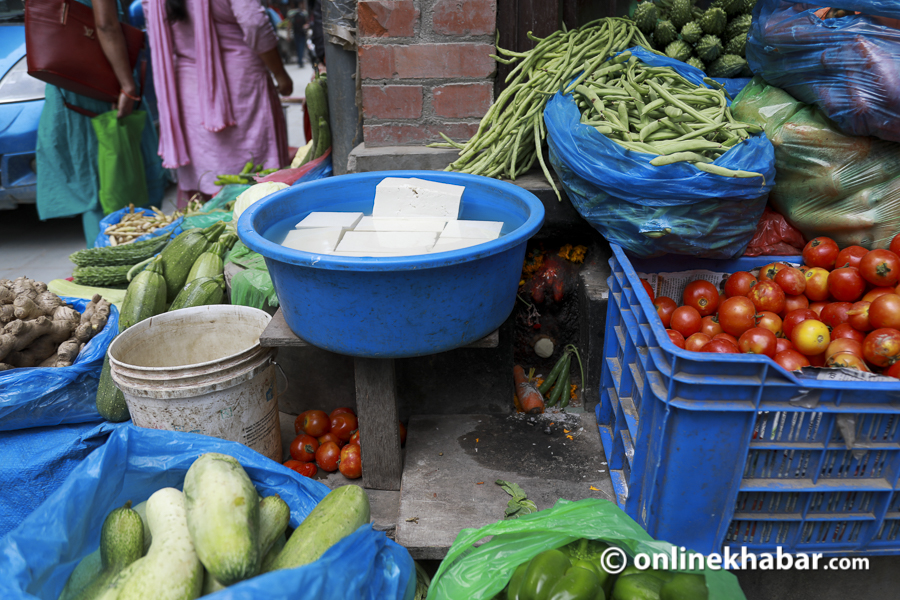
The story of lost gods and their destroyed houses
When asked Tuladhar shares that even he doesn’t know where the last one is.
“Many say that it is underground. When they were paving the road, they laid the road over the small shrine. That gives you a message that even the gods are unsafe in this country,” he continues.
Locals in the area argue that the reason the temple fell was because it lost one of it protectors.
For many Kasthamandap which was built in the 12th century was more than a temple. It was a place where traders came for refuge. It was an important part of the silk route. According to various books and documents, many people came to Kasthamandap to rest after a long journey from India or Tibet. But the essence of it got lost with years gone by.
“It was a place where everyone was welcome. I don’t know if people remember but the place didn’t have any doors. But now I think Kathmandu Metropolitan City might have a ticket system to get inside the temple,” he continues.
Tuladhar then takes the kids to the open space opposite the nine-storey palace. Pointing at the Chinese flag, he shares that it gives a pain to him that foreigners are working to rebuild Nepali heritage monuments, but he shares he doesn’t feel as sad because the nine-storey palace isn’t as old or as important as other monuments in the UNESCO Heritage site.
For instance, there has not been any effort to rebuild the house of the living goddess Kumari. It is still given wooden support both outside and in the inner courtyard. It is a place which is full of visitors every day, but it is just sitting there waiting to be restored.
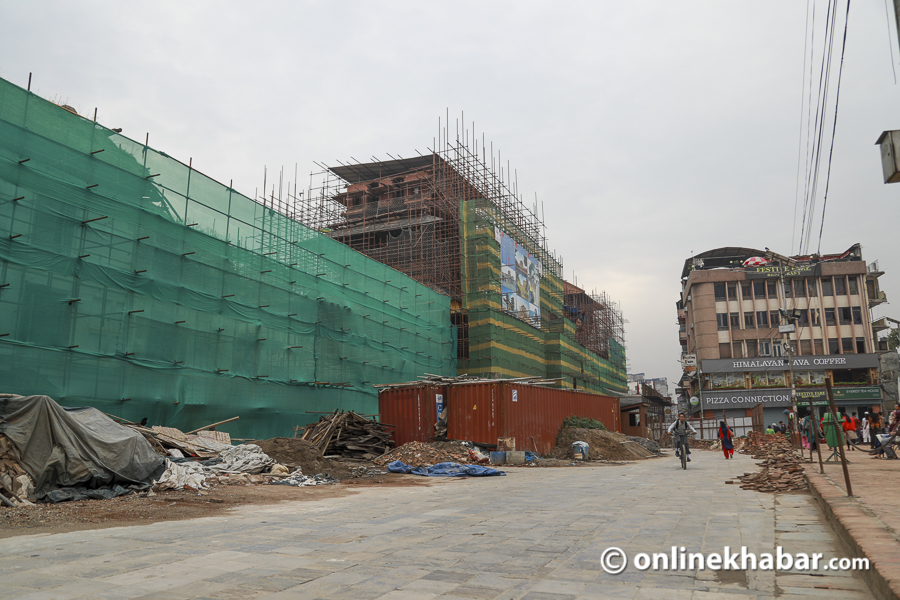
The forbidden god
Tuladhar, then, takes them to a Buddhist monastic complex, a further west of the Kumari Ghar. The state of that complex is worse than the Kumari Ghar. The priests who used to live there have left the area and gone. The place is surrounded by shops and the square which is home to small Buddhist shrines are full of bikes and scooters.
These monastic complexes, often known as Aangan Chhen, belong to a particular clans. However, people have left them in a sorry state. It seems locals do not care about it. However, they also have a different story to justify their passivity.
“We don’t really have a choice. Our elders tell us not to talk about restoring it. They fear that something bad will happen if we disturb the god inside these complexes,” adds Tuladhar’s apprentice Maharshi Rajbhandari.
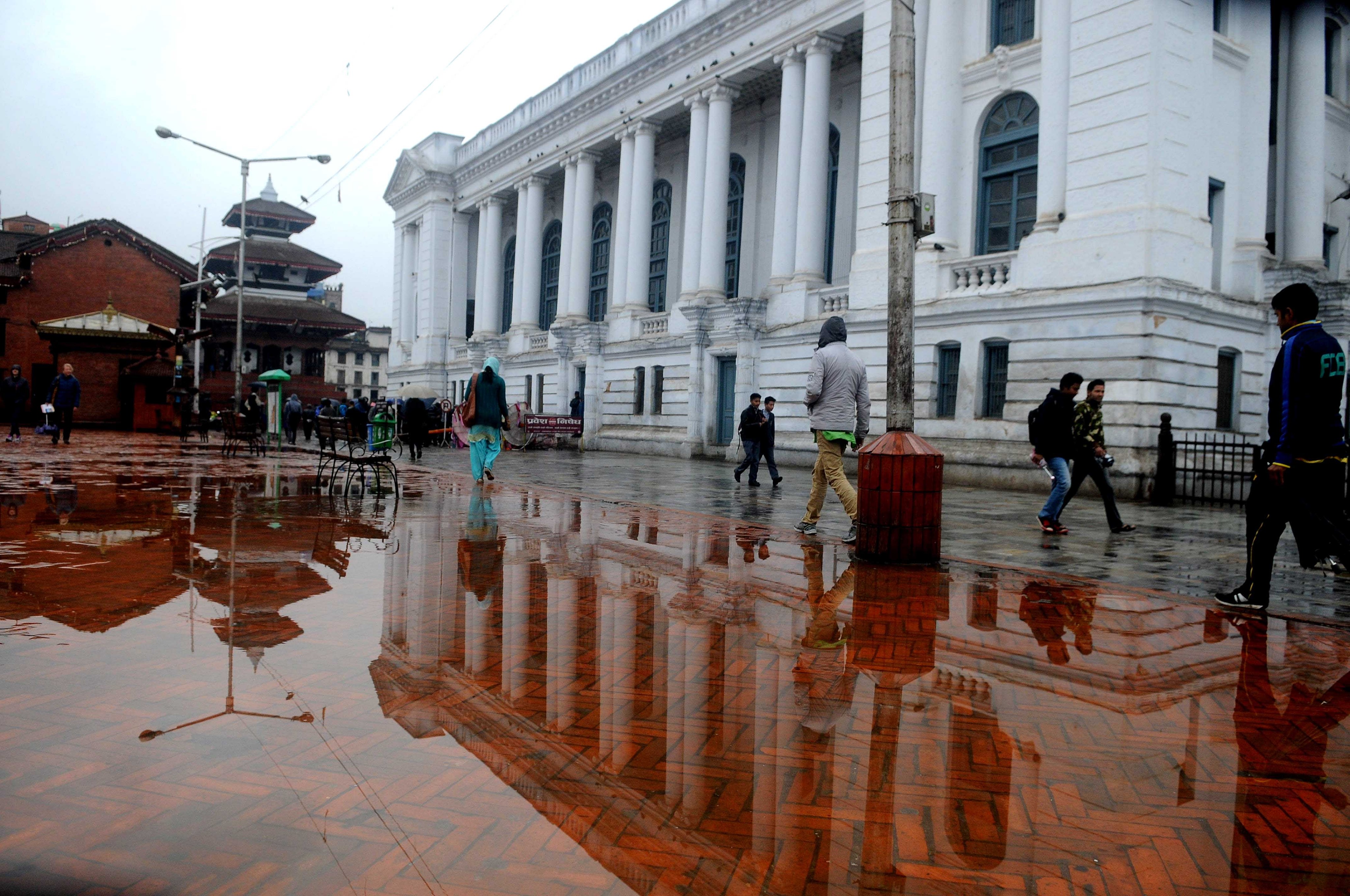
He adds that the main problem is the fall of the guthis. The guthis which still have a lot of land under their names have become inactive, which is why monuments like the Kumari Ghar and Kasthamandap haven’t been rebuilt, four years on from the earthquake.
Tuladhar then points towards a small shrine, half of which is below the ground. He asks them why it is below the ground. He gets many answers but no one gives the right one.
He then tells everyone present that the chaitya (small Buddhist stupa) was built in the Lichhavai period over 1,500 years ago.
“There are two ways you can figure out that these are from the Lichhavi period. One is that these chaityas do not have an image of the Buddha. Legends say that Buddha had asked people not to create any statue of him. The other reason you can figure that these were built years ago is from the outer layer of the chaityas. They have a greenish colour which is quite smooth when you touch it. That form of art isn’t available anymore,” he adds.
The heritage walk ends near the balcony of the Gaddi Baithak. The area is home to two huge pagoda style temples waiting for their post-earthquake reconstruction.
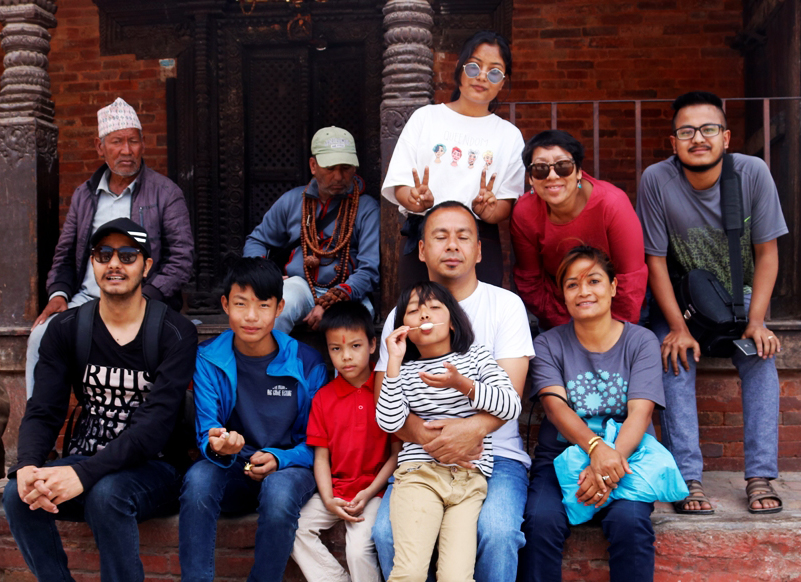
—
Next time, Tuladhar will take the children and youth inside a museum in Kathmandu Durbar Square, where one can hope to learn more about the old palace shared by both the Mallas and the Shahs.
Stay tuned!




